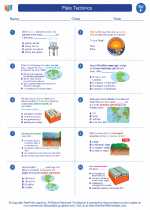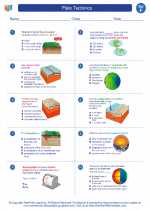Paleogene
The Paleogene is a geologic period that spans from about 66 to 23 million years ago. It is the first part of the Cenozoic Era, which is the current era in the geologic time scale. The Paleogene is divided into three epochs: the Paleocene, Eocene, and Oligocene.
Paleocene Epoch
The Paleocene epoch lasted from about 66 to 56 million years ago. During this time, the Earth was recovering from the mass extinction event that marked the end of the Mesozoic Era. The climate was generally warmer than it is today, and mammals began to diversify and evolve into various forms.
Eocene Epoch
The Eocene epoch lasted from about 56 to 33.9 million years ago. This period is known for its warm climate and the widespread presence of tropical rainforests. It was a time of significant evolution and diversification of mammals, birds, and other organisms. The Eocene is also marked by the expansion of modern groups of plants and animals.
Oligocene Epoch
The Oligocene epoch lasted from about 33.9 to 23 million years ago. During this time, the Earth's climate began to cool, leading to the gradual disappearance of tropical rainforests and the expansion of grasslands. Many modern mammal groups continued to evolve, and the first grasses and grazers appeared, setting the stage for the evolution of large herbivorous mammals.
Study Guide
- What is the Paleogene?
- What are the three epochs of the Paleogene?
- Describe the climate and major events of the Paleocene epoch.
- What characterized the Eocene epoch in terms of climate and evolution?
- How did the Oligocene epoch differ from the preceding epochs?
- What were the significant evolutionary developments during the Paleogene?
- How did the climate change over the course of the Paleogene?
◂Science Worksheets and Study Guides Sixth Grade. Plate Tectonics

 Worksheet/Answer key
Worksheet/Answer key
 Worksheet/Answer key
Worksheet/Answer key
 Vocabulary/Answer key
Vocabulary/Answer key
 Vocabulary/Answer key
Vocabulary/Answer key
 Vocabulary/Answer key
Vocabulary/Answer key
 Vocabulary/Answer key
Vocabulary/Answer key
